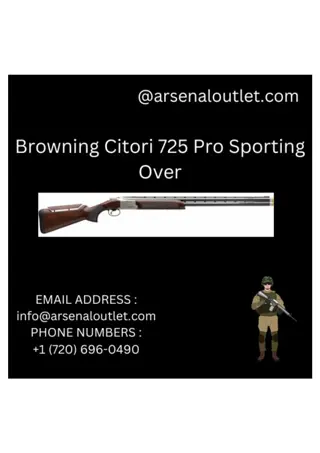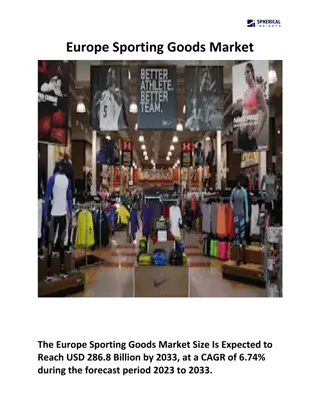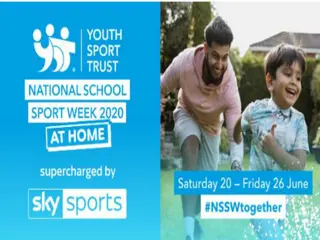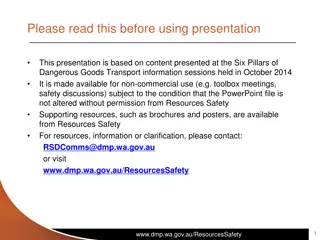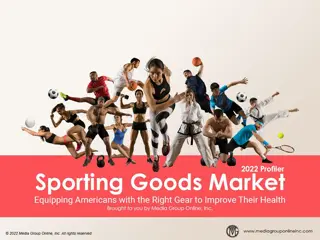Challenges and Trends in the Sporting Goods Industry
The sporting goods industry has faced challenges such as store closures, bankruptcies, and shifting consumer preferences. Sales in sporting goods stores remained relatively stable from 2015 to 2016, but a significant decrease was seen in the first seven months of 2017. Participation in physical activities has shown a decreasing trend, with fewer people engaging in sports and outdoor activities. Retailers are competing for consumer spending, with a decline in spending on sporting goods but an increase in active experiences. Despite some retailers facing challenges, the industry continues to evolve in response to changing dynamics.
Download Presentation

Please find below an Image/Link to download the presentation.
The content on the website is provided AS IS for your information and personal use only. It may not be sold, licensed, or shared on other websites without obtaining consent from the author.If you encounter any issues during the download, it is possible that the publisher has removed the file from their server.
You are allowed to download the files provided on this website for personal or commercial use, subject to the condition that they are used lawfully. All files are the property of their respective owners.
The content on the website is provided AS IS for your information and personal use only. It may not be sold, licensed, or shared on other websites without obtaining consent from the author.
E N D
Presentation Transcript
Sporting Good Stores Batting Average Unchanged According to US Census Bureau data, 2016 sales (not adjusted) at sporting goods stores totaled $46.33 billion, essentially unchanged from 2015 s $46.35 billion. Sporting goods stores sales through the first 7 months of 2017 decreased 8.55% to a total of $23.965 billion, compared to $26.205 billion for the first 7 months of 2016. According to an article in Forbes, the US sporting goods industry had estimated revenue during 2016 of $87.72 billion from all channels, an increase of 2%.
Retailers Take Hard Hits Following on the heels of last year s liquidation of the country s 2ndlargest sporting goods retailer, The Sports Authority, and other industry bankruptcies, MC Sports filed for bankruptcy during February this year, and will close all of its 68 stores. Other challenges include competition from specialty retailers, such as Lululemon, selling athleisure clothing; the contraction of the golf market; and costly leases. Sporting goods manufacturers, such as Nike, now sell directly on Amazon. Although Dick s Sporting Goods revenues reported during August 2017 increased 9.6% to $2.157 billion from the previous fiscal year, most of this was from the addition of new stores. Same-store sales increased only 0.1%, significantly lower than forecasted.
Decreasing Trend in Physical Participation The Physical Activity Council reports that approximately one-third of Americans age 6+ are active to a healthy level. During 2016, there were slightly more hard-core exercisers, but fewer people exercised in the active and casual ranges. Participation in most sports categories increased during 2016, with the exception of individual sports (-0.3%) and water sports (-3%). Fitness sports increased the most, at 2%, as well as team sports led by rugby and gymnastics. According to the Outdoor Foundation, running, jogging and trail running; bicycling; camping; fishing; and hiking were the most popular outdoor activities of Americans 6 24. Skateboarding was #4 of the most frequent outdoor activities, replacing hiking.
Sporting Goods Competing for Consumer Dollars Although spending on active experiences, such as outdoor recreation, gym memberships and travel to participate in sporting events, increased during 2016, spending on sporting goods decreased. Fewer children participated in school sports during 2016 (18.6% compared to 20.2% during 2015) and outside school sports (21.9% compared to 25.0% for 2015). Lessons, instruction and sports camps also decreased, from 19.3% to 19.0%. Some of this decrease in youth sports participation can be explained by schools charging higher fees for in-school sports programs, which typically cost $100 or more.
Some Retailers Score, Others Fumble According to Sports Insights 2017 Power Retailers Report, Dick s Sporting Goods is the #1 US sporting goods retailer, with a 10% market share. Although Dick s appeared to profit from the demise of its major competition, results have suffered during 2017. Dick s has launched a private-label clothing line to compete with Under Armour and has consolidated vendors, some of which have been asked to invest in Dick s online and brick-and-mortar business in return for more square footage, displays and promotions. For Foot Locker, 2016 was a banner year, with a 23% increase in profits and $7.7 billion in revenue. Foot Locker is investing more in technology, customer experience and ecommerce. It focuses on custom items, sneaker culture and customer satisfaction.
Product Performance According to The NPD Group, US sales of athletic footwear increased 3% during 2016 to $17.5 billion. This was a slower growth than previous years (an average of 4% growth per year for past decade), due to closure of The Sports Authority and other retailers. Clothing and footwear that were actually used for athletic activities accounted for less than one-third of activewear dollar sales. Among purchases intended for exercise, purchases for fitness have increased while purchases for running have decreased. For sports and fitness enthusiasts, companies are bringing new products to market, including wearable fitness technology in clothing and shoes and high- tech fabrics and materials that keep athletes cool and dry, and even boost performance.
Advertising Strategies Appeal to women, which is an underserved market, with empowering messages highlighting products made for their unique needs. Tap into the athleisure trend by showcasing fashion-forward designs and, for women, outerwear that can blend street fashion with activewear, so that it is appropriate for general use. Advertise offerings that are unique to your store and items that can be customized to compete with online offerings.
New Media Strategies Host local sporting events at athletic clubs to drive foot traffic. Share information and visuals of groups meetings and events on Facebook, with a mobile coupon for members and those who repost. Give incentives to customers with a multi- tiered loyalty program. Hard-core athletes are your best customers. Reward them for social media shares in addition to purchases. With an increasing number of wearable fitness technology products, ask customers to share their feedback about these products and reward those who post on social media with a mobile coupon for a future purchase of similar products.



